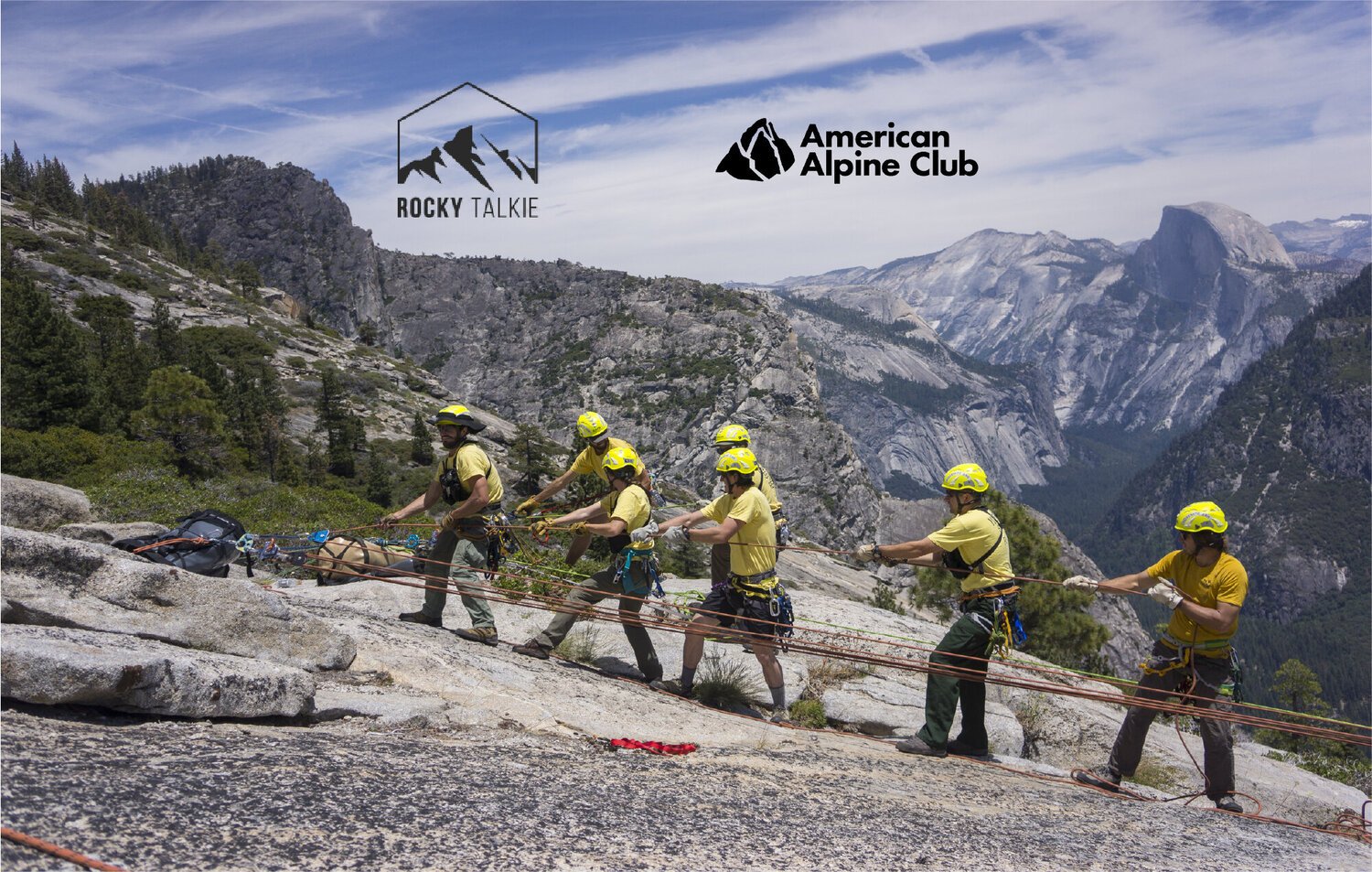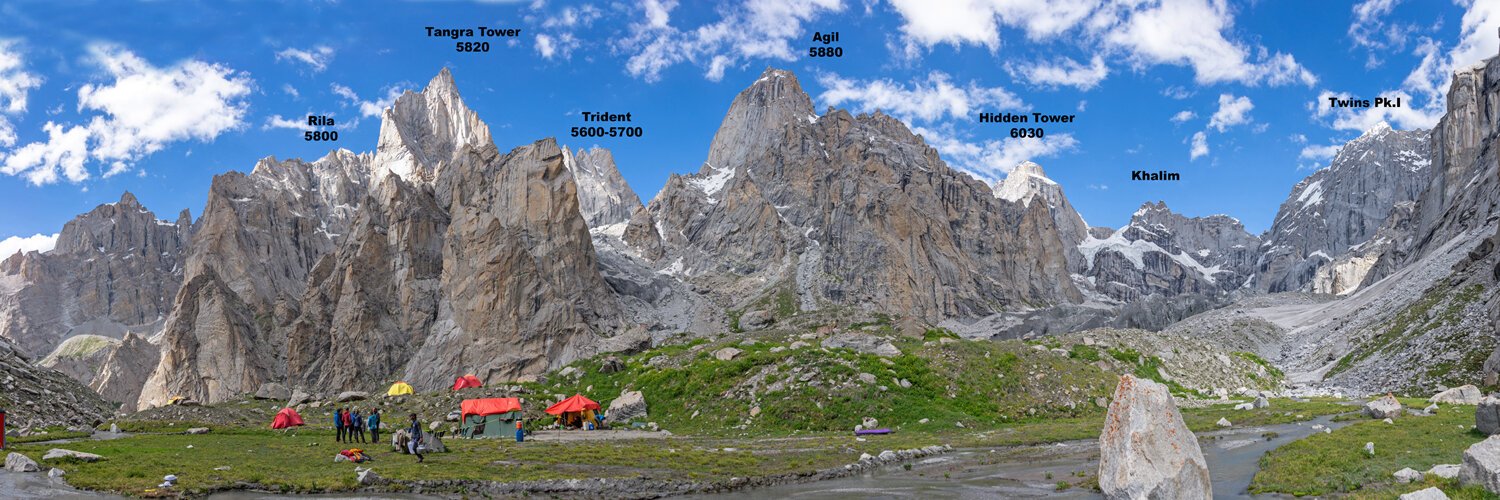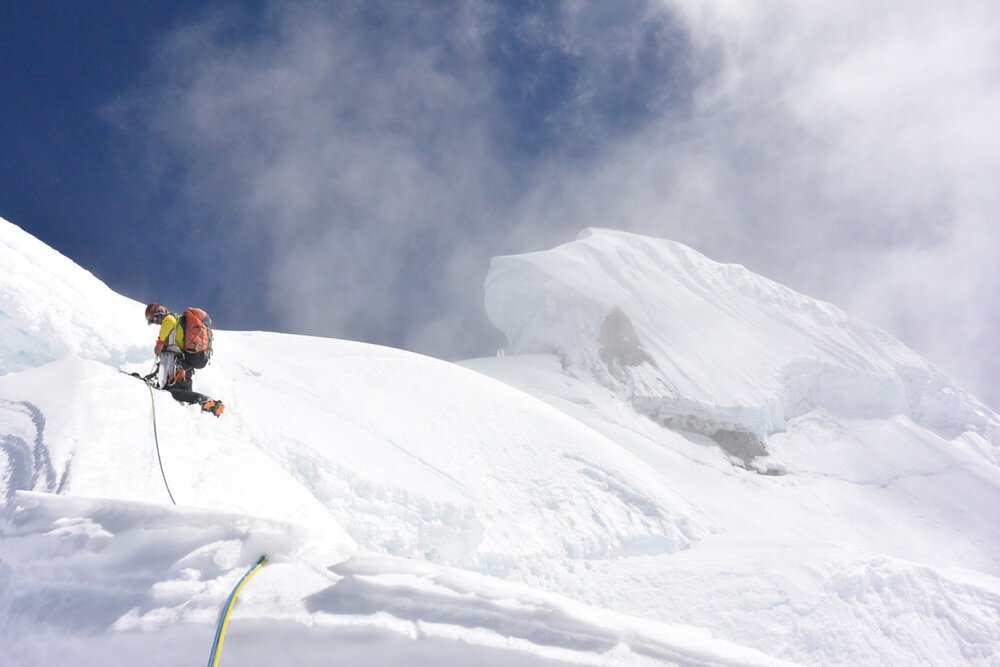Surviving El Gigante
Mark Hudon and Jordan Cannon
Jordan Cannon and Mark Hudon are headlining the AAC’s Annual Benefit Gala in Denver on March 26, sharing stories of their unique and productive climbing partnership. (Tickets are still available for both the in-person and streamed events—get them here!) We asked these big-wall experts and close friends to share stories of near misses they’ve experienced, and Jordan shared a wild tale from El Gigante, a huge wall in Chihuahua, Mexico.
In January 2019, Jordan and Hayden Jamieson attempted Logical Progression, a 28-pitch 5.13 on El Gigante that’s typically approached from above, by rappelling in and climbing out. Jordan and Hayden stashed gear for two bivouacs on their way down the wall and then started climbing back out. The first two days went well, as they worked on the crux pitches and bivouacked eight pitches up….
Photo by Hayden Jamieson
“Day 3 was where things took a turn for the worse,” Hayden wrote in a story at the Gnarly Nutrition website. “I was woken at sunrise to the unwelcome sensation of light rain on my face.” The two continued up the wall, aiming for their next bivy cache at the top of pitch 17. But the rain kept getting stronger, and by pitch 14, they were in trouble. “We had nearly no food, very little water, we were still 200 to 300 feet below our next stash of food, the rain was getting heavier, and our clothes were saturated with water down to our underwear… Several microwave-sized blocks were blown off the wall from above and narrowly missed both of us.” The two 5.13 climbers found it impossible to climb run-out 5.11. They were stuck.
In pounding rain, they set up their portaledge and rigged their haul bag on bolts above them to guard against rockfall. But they were already soaked. “That night was certainly the longest, coldest, and most terrifying night of either of our lives,” Hayden wrote. “We shivered uncontrollably and spooned each other for warmth as the storm raged all around us.” Luckily, the clouds cleared in the morning, and they made their way up the rock by any means necessary, refueled at their food cache, and pushed to the top, 16 hours after leaving their bivouac.
Happy to be alive. Photo by Hayden Jamieson
LESSONS LEARNED
Says Jordan: “I think we were very close to dying of hypothermia, waiting it out in a poor position with inadequate gear. All of which could have easily been avoided if I had taken a note out of Mark Hudon’s book on big wall preparedness! Thankfully, I learned my lesson and even picked up some more wall tips from Mark during our time climbing together after that trip.”
Here are some of the things Jordan has learned about preparing for storms on big walls:
1. Never bring down sleeping bags (or down jackets, if you can help it). Always synthetic, because it will keep you warm even when it’s wet.
2. Always bring a bivy sack. Even when you think you won’t need it. (We, stupidly, decided to leave ours on the summit before we rapped the wall.)
3. Make sure your rain fly is in good condition. Ours was old and had holes in it, so it leaked.
4. Always bring some sort of emergency kit consisting of a rain jacket, rain pants, base layers (top and bottoms), hat, gloves, and warm socks. You likely won’t use any of it, but if you do, you'll be glad to have it!
5. Bring an inReach or some kind of satellite phone, especially if the wall is remote.
6. In the face of bad weather, it’s better to hunker down before a storm rather than waiting for it to hit and getting wetter than necessary in the process.
Mark Hudon (top) and Jordan Cannon in Zion National Park. Photo by Samuel Crossley
“Don't underestimate the seriousness of big wall climbing and the threat of inclement weather, especially on a remote big wall in Mexico in the dead of winter. (But in Yosemite, too!) Even if it is just ‘big wall sport climbing,’ that doesn't mean it’s will be casual. Always be prepared for the worst!”
Mark Hudon has been climbing big walls since the late 1970s and has compiled some of his expertise into excellent downloadable PDFs at his website. And remember, you can see Mark and Jordan together at the AAC’s Annual Benefit Gala on March 26. Don’t miss it!
El Cap Stories
As Jordan Cannon says, you don’t have to be in a remote canyon in Mexico to get into serious trouble when a storm hits a wall. The pages of ANAC have reported many such incidents from El Capitan over the years. Here are two examples:
• In September 1991, “the first winter storm of the season moved into the Central Sierra, dropping 4.5 inches of rain at lower elevations with snow level reaching 4,000 feet.” Two pairs of very experienced climbers ended up getting rescued from hard El Cap routes: One had been trapped in a run-off waterfall on the Sea of Dreams route, and the other was nearing the top of Native Son when one of the climbers got hypothermia.
• In late May 1993, two climbers were trapped at Camp 5 on The Nose after heavy rain fell all day, causing mild hypothermia. Rescuers were able to lower about 800 feet from the rim to their position, give them dry clothes, and help them jumar out.
A survey of 41 years of ANAC reports on The Nose (from 1974 to 2014) found that about one-quarter of all accidents involved weather and stranding. The “Danger Zones” article from ANAC 2015 focused on the major accident causes on the Nose: Read it here!
The Sharp End: Deadly Avalanche
In the latest Sharp End, Ken Wylie, author of the book Buried, recounts a horrific accident near Revelstoke, British Columbia, in January 2003.
If you’re a Sharp End fan, don’t miss the AAC’s Annual Benefit Gala on March 26. Ashley Saupe will be hosting a live interview for an upcoming show. In-person and streaming tickets are available here!
The monthly Prescription newsletter is supported by the members of the American Alpine Club. Questions? Suggestions? Write to us at [email protected].




















